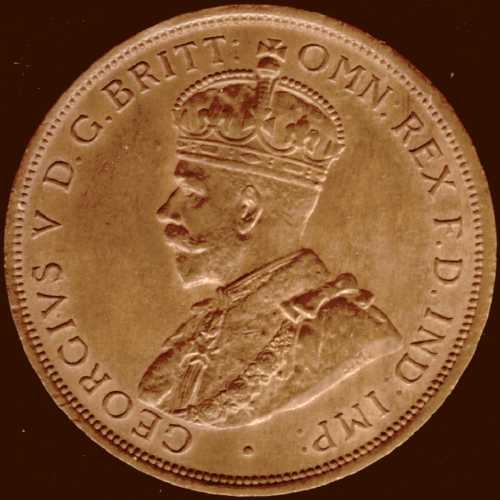
177 rim denticles.
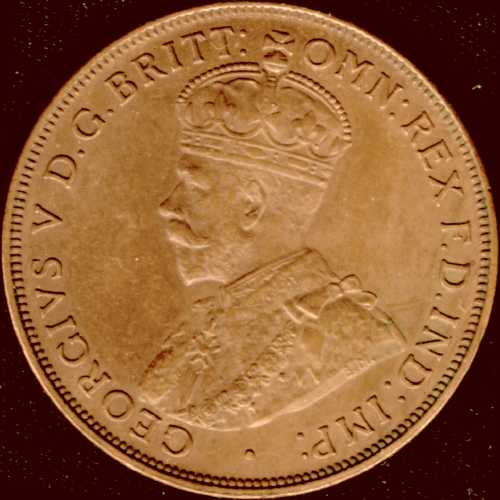
178 rim denticles
|
|
General notes on obverse master diesPenny obverse master die varieties
George V obverse master die types
Distinguishing the George V obverses
George VI obverse master die types
Distinguishing the George VI obverses
Elizabeth II obverse master die types
The following tables illustrate the master dies use to strike Australian pennies.
Following the pattern of Paul Holland's article, I assign a number to each obverse
die and a letter to each reverse but whereas Paul starts the number/letter assignment
anew with each major change in design (typically coinciding with a change in the
British monarchy), I assign a unique number or letter to each die. One reason I
do this is just for consistency. There are some coins, notably the halfpennies and
sixpences, where design changes do not coincide with the ascension of a British
ruler and I simply prefer a scheme which works for all denominations. A second and
somwehat related reason is that I am working on a pseudo-taxonomic nomenclature
for Australian Commonwealth coins and the scheme works better if there is no duplication
of die identifiers.
 |
Obverse 1: English (London) obverse 177 rim denticles. |
 |
Obverse 2: Indian (Calcutta) obverse 178 rim denticles |
The next table shows enlargements of some of the features which distinguish coins
struck with the English and Indian dies. There are more distinguishing features
than those shown below but these are the easiest to spot, especially on worn coins
and on images posted on the Internet.
| ||||||||||||
|
 |
Obverse 3 Used on all pennies struck in Australia 1938-1948. 156 rim denticles. |
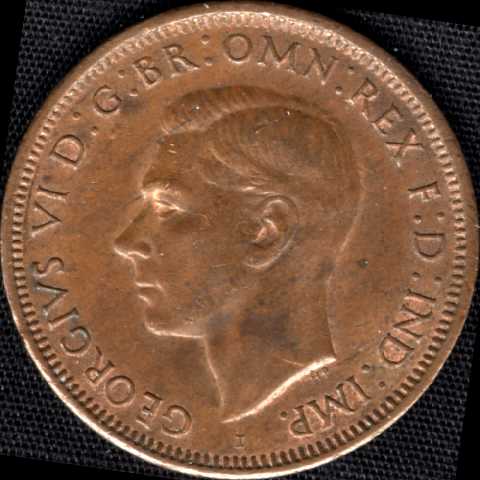 |
Obverse 4 Used on pennies struck in Bombay, 1942 and 1943. 145 rim denticles. Mint mark
"I" is usually present below the bust. |
 |
Obverse 5 IND:IMP. deleted from legend and F:D expanded to FIDEI DEF. 155 rim denticles.
This obverse was used for all pennies minted 1949-1952. |
|
Details of obverses 3 and 4 are shown in this table. The wording of the legend is sufficient to distinguish obverse 5 from the other two. | ||||
|
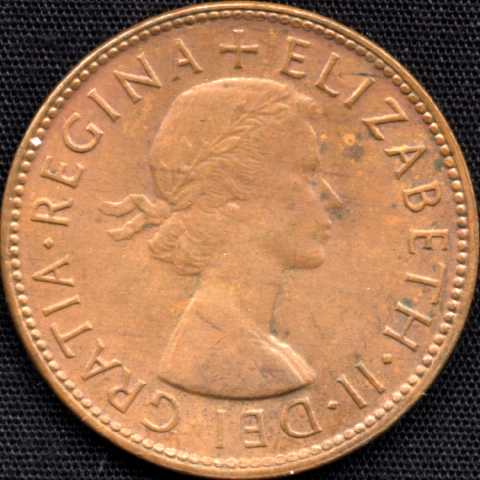 |
Obverse 6 Used for coins struck in 1953 at the Melbourne mint. Rim embellishment comprises
116 round beads. F:D omitted from legend. I of GRATIA is aligned over the gap between
two rim beads. |
 |
Obverse 7 Used for coins struck at the Perth mint in 1953. Similar to obverse 6 except
that there are 117 rim beads. I of GRATIA is aligned directly over a rim bead. |
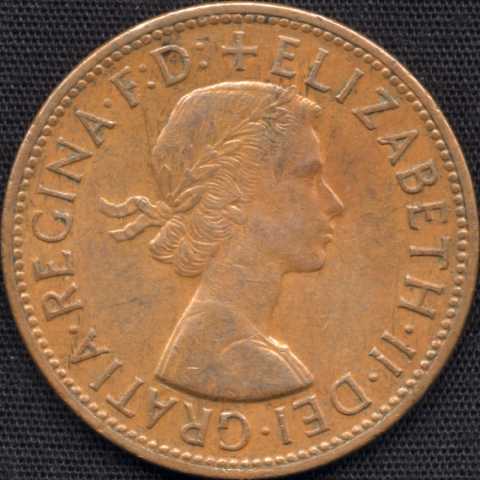 |
Obverse 8 Used at Melbourne for coins struck from 1955 to 1964 inclusive and at the Perth
mint for most 1955 and a few 1956 pennies. Similar to obverse 6 but with F:D: restored
to the legend. 120 rim beads. I in GRATIA and in ELIZABETH each aligned with a rim
bead. |
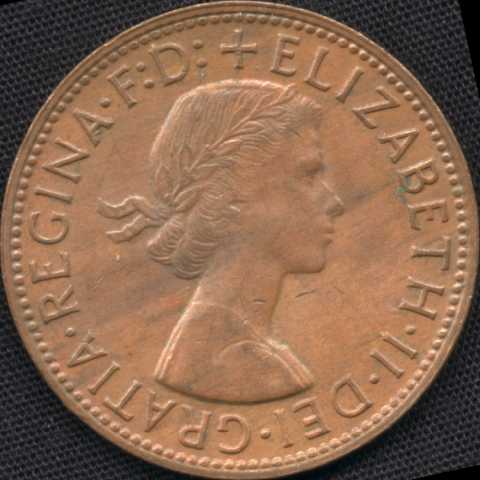 |
Obverse 9 Used at the Perth mint for coins struck from 1955 to 1964. (The 1955 Perth penny
with the type 9 obverse is rare.) Similar to obverse 8 except that there are 116
rim beads. I in GRATIA and in ELIZABETH each aligned with the gap between two rim
beads. |